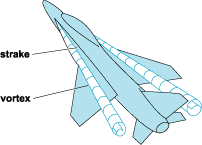hardingfv32 wrote:I'm sorry, I did my research but this is still not clear to me....
I am not really qualified to respond in detail, Brian, but, for what its worth, here is an attempt. I'm sure other posters will correct me if/when I stray.
The downforce generated by a diffuser is, amongst other things, proportional to its expansion ratio (the ratio of exhaust CSA to throat CSA). Make the expansion ratio too large, and the flow through the diffuser will separate from the diffuser walls (the flow will stall) and much of the potential downforce will disappear. Diffuser stall can be delayed in a number of ways (many of them illegal in F1), but simply blasting high energy air along the upper surface of the diffuser (not in the diffuser itself) will help both to keep flow attached & to increase the downforce generated by the diffuser (proportional to the energy supplied). Having a second element to direct the high energy air will increase the effect &, very probably, the beam element can be arranged to perform that function.
According to aircraft people, the technique can more than double the maximum lift coefficient of a wing, but the actual increase will depend upon the energy supplied. In other words, diverting fuel energy from the wheels to the exhaust will reduce available traction, but will also reduce the need for traction (up to a point), by increasing corner exit speeds by virtue of the increased downforce. Putting it another way, the technique exchanges end of straight speed for corner exit speed. It will, however, be most effective through medium & high speed corners & least effective through low speed corners.
Practically, there are many things to consider when using exhaust gas to re-energize diffuser flow. These include aero balance (probably will require more dowforce from the front wing), power on/power off performance (minimizing the difference makes the technique driver-friendly), engine life, temperatures underneath the rear bodywork, fuel consumption, and "optimizing" the balance between traction & downforce. Incidentally, (& unusually in the over-regulated series that is F1) the balance can be varied at will by a driver during a race simply by changing engine maps.






